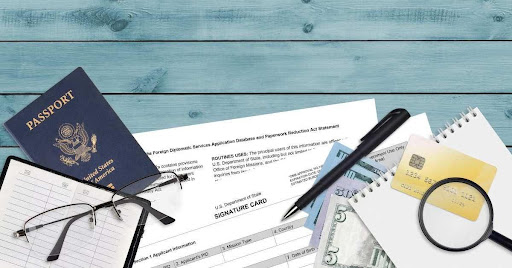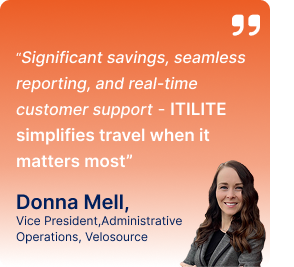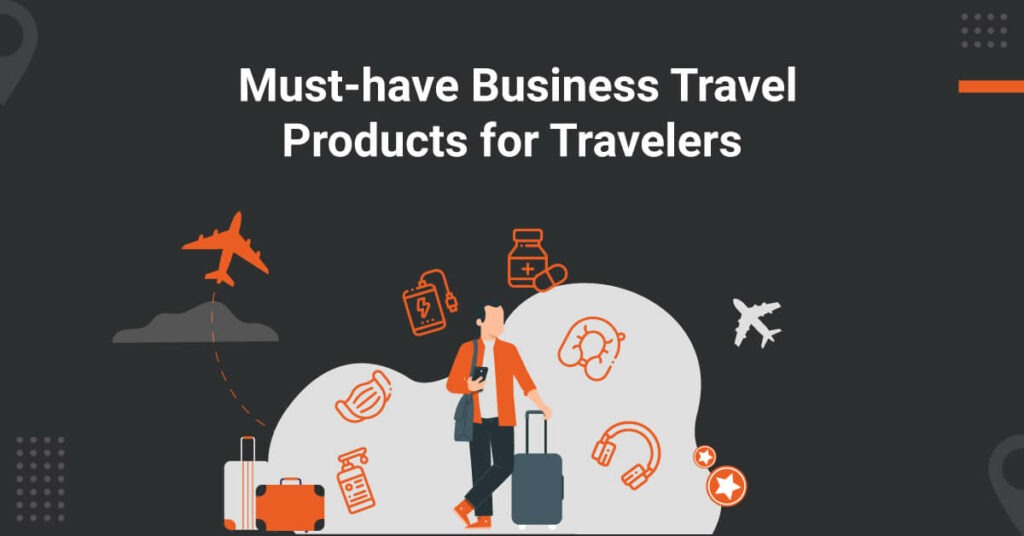
A company travel policy lays the foundation for your organization’s travel management process.
If you have employees traveling for business, especially during these times, you must build a corporate travel policy. The policy should primarily balance business outcomes on mobility and cost. It should also enable procedures to keep employees safe.
Let’s see the travel policy examples for drafting and implementing a clear and concise travel policy and a customizable travel policy template for your use. Learn how to write a travel policy.
Steps for Creating a Corporate Travel Policy
- Section A: Objective of Travel Policy
- Section B: Travel Booking Process
- Section C: Expense Categories
- Section D: Non-reimbursable
- Section E: Expense Reporting and Reimbursement Process
- Section F: Travel Support & Safety Information
Download the Corporate Travel Policy Template for Free
Having a clear sample company travel policy template will help you keep your employees happy & safe and save money for the company. We have created a customizable business travel policy template that you can use to create a policy in your organization. The travel policy template can also serve as a sample employee travel policy.
Get your free copy of the corporate travel policy template.
Calculate your savings now!
The Key Sections of an Effective Company Travel Policy
A business travel policy should include a list of travel policy examples, guidelines, and rules for the travel your employees undertake. Moreover, the policy should be concise and specific so that employees don’t get confused or bored while referring to it.
While there is no one approach for creating a corporate business travel policy for employees, the best corporate travel policy document should cover the following:
Section A: Objective
Smart travel policy examples should always include an objective. It should clarify who the policy is for and the goals you want to achieve by revising or formulating it.
For instance, is your top priority to control business travel costs, offer more flexibility to employees when they travel, or increase corporate business policy compliance?
Moreover, the policy objectives should be defined as bullet points. Don’t forget to include benefits for employees that the company seeks to deliver.
Section B: Travel Booking Process
As one of the travel policy examples, this section should include everything your employees would need to know about where, how, and when to book travel.
You’ll likely want to start with a statement encouraging employees to book responsibly and affordably (if they are allowed to book themselves).
1. Separate Guidelines for Domestic/ International Travel
Having generalized guidelines for domestic and international corporate travel can leave employees confused and result in involuntary policy violations. Hence, your corporate travel policy template should have different sections for domestic and international travel booking guidelines.
It should define what employees must take care of while booking domestic or international travel.
For instance, the guidelines can define separate expenditure limits for domestic and international flight and corporate hotel bookings. Moreover, you can also include whether the flights will be direct or indirect according to the destination.
2. Booking Procedure
Including a centralized booking procedure in your business travel policy for employees can make booking flights and hotels easier. Therefore, you should include the process for booking trips through business travel management software or a travel agent.
If your company has implemented a travel software solution, provide the link to the platform so they are redirected to the platform for booking. Otherwise, write out the name and contact details of the travel manager they are supposed to contact to request a booking or for travel details.
3. Latest Booking Period
You should include the latest booking period in your company travel policy template, for example, at least 10 days before the trip. This will ensure your employees organize everything well on time. Also, the booking period should be different for domestic and international travel.
Encourage employees to avoid last-minute bookings as it dramatically increases travel costs, providing only a few options to choose from.
4. Policy Around Flight Cancellations, Missed Flights & Rebooking
Frequent last-minute flight cancellations or re-bookings can drive up your travel costs. Therefore, the business travel policy for employees should clearly state if there will be any extra charges for rebooking flights or hotels. You can provide a link to the cancellation corporate travel policy of the respective airlines and hotels for better clarity.
5. Rewards for Employees
Rewarding employees who pick economical booking options will drive massive travel cost savings. Therefore, you should let your employees know if your company’s business travel management solution provides rewards or loyalty points for cost-conscious employees.
Some advanced travel management software platforms can help you split the travel savings and give a part to employees as an incentive. Such corporate travel incentives can fuel travel cost savings on every business trip.
In the policy document, you can add a line: “Employees may choose hotel/flight below their policy limit only to get rewards.”
6. Guidelines Regarding Bleisure
Bleisure (business+leisure) is extending business trips to include leisure activities. Sometimes, employees may want to extend their business trips or use some of their vacation days to relax on business trips or explore local tourist destinations.
For such cases, the corporate travel policy should provide rules around what cost difference is allowable for the returning flight or extended hotel stay.
Section C: Expense Categories
This is a vital section of any sample company travel policy for employees. It should include information regarding all expense categories such as flights, accommodation, ground transportation, meals, client entertainment expenses, and telephone usage.
Here’s the information that you can include under each category.
1. Flights
- Indicate under which circumstances an employee can book business class vs economy.
- State the flight booking cost limit grade-wise for domestic and international travel.
- State if employees can keep their flyer points or if the company retains them for discounts.
- Specify preferred vendors/airlines (if any).
- State if the company will reimburse in-flight merchandise purchases or not.
2. Accommodation
- Provide employees with a maximum room rate per day, as per their policy limits, in popular company destinations.
- Specify room type. For instance- only standard rooms are allowed, upgrades are allowed at no extra cost, etc.
3. Ground Transportation
- Indicate if your company allows employees to use apps such as Uber and Lyft; specify if they should use it or not if there is surge pricing; type of car allowed- compact or midsize.
- Specify the maximum amount that will be reimbursable per mile or kilometer per day.
- Specify if receipts are mandatory or not.
- Encourage employees to use public transportation when convenient.
4. Meals
- Share reimbursable expenses for breakfast, lunch and, dinner individually.
- Share per diem rates or a daily maximum.
- Indicate if the company would reimburse for alcohol.
- Set rules for team meals.
- State clearly if the company would consider tips as a reimbursable expense or not.
5. Client Entertainment
- Specify what would be considered client entertainment and a reimbursable expense.
- Set spending limits.
6. Telephone Usage
- State if the phone bill amount is reimbursable or not. If yes, then specify the maximum limit.
- State whether personal phone damages or thefts would be covered as an expense reimbursable by the company.
Section D: Non-reimbursable
Share in detail with all employees travel expenses that your company would NOT reimburse. Create a list with some examples of non-reimbursable items such as:
- Extra baggage fee
- In-flight purchases
- Alcohol consumption
- Tips to hotel staff
- Minibar purchases
- Parking fines or traffic violations
- Additional bed/bedding
- Childcare
- Pet Boarding
You may have covered some of the items in the expense categories section of your corporate travel policy template but it’s useful to have an entire list like this available for the convenience of the employees.
Section E: Expense Reporting and Reimbursement Process
This section clearly defines the expense reporting and reimbursement process. Your policy should clearly state the following:
- The minimum amount that would require a receipt/document
- If you would accept credit card statements as proof of expense or not (Ideally, you should not, as the credit card statements would show the entire amount of the lodging which could include a non-reimbursable expense such as minibar or alcohol purchases)
- The timeline for submitting reimbursements post-trip
- Tool via which expense reports should be submitted
- The approval flow i.e. to whom they should be submitted for approval
- How soon can they expect the reimbursement
- What will happen in case of exceptions i.e. if someone has booked lodging out-of-policy, etc.
Section F: Travel Support & Safety Information
An important goal of your corporate travel policy for employees should be to spread awareness about your company’s steps for ensuring travelers’ safety.
Ensure to include information regarding travel support, travel insurance, emergency contact numbers, etc. A few of your pointers could include information on the following:
1. Tracking Employees
Emergencies can occur anytime while your employees are on a business trip. Therefore, you must keep track of your employees’ location while traveling to intervene and help them in an emergency.
Include how and when the employees will be tracked to ensure their safety during travel while also protecting privacy.
2. 24/7 Multi-Level Support
While traveling internationally, your employees might need help navigating the new place. For instance, they might need a location-based recommendation about the nearest public transportation. Therefore, you need to ensure they have 24/7/365 business travel support.
Include the contact details of the travel support provider in your travel policy document. Additionally, let them know that the support is available through easily accessible modes like chat and calls.
Moreover, make sure you highlight the emergency contact details of your travel partner or an SOS helpline number in case of untoward incidents
3. Travel Insurance Policy Details
Business travel insurance is extremely important to protect your business travelers’ lives and property while on a business trip. Therefore, you should invest in a good insurance plan and include the details in your policy so that your employees know about the covered aspects.
List the details of the travel insurance you provide to your employees (if any) i.e., the vendor, insurance amount, policy, etc.
Best Practices for Drafting Company Travel Policy
1. Focus on Employees’ Needs
A corporate travel policy for employees should be built keeping travelers in mind. Employees should not struggle to know which hotel they can book or not. Showing them what’s in and out of policy while booking the tickets will enhance their experience.
2. Keep it Simple
Your company travel policy should be easy to understand and include the information most pertinent to employees. If the policy is clear, employees will comply with it. If not, they might end up booking out of policy. You can also include a glossary section if your travel policy includes complex terms.
3. Don’t Miss Out on the Details
Your business travel policy template should be granular and comprehensive. You should have separate guidelines for employee levels, departments, functions, trip destinations, and duration.
With detailed policy guidelines, your employees will be clear about the travel-related rules that apply to them. This will increase travel policy compliance in your organization and help you meet your travel goals.
4. Create a Flexible One
The travel policy should be flexible so that your employees cancel/reschedule their travel easily. Your policy should also make it simple for travelers to overspend if there are safety concerns.
While this may partly increase costs for the company, it will give you and your employees peace of mind.
5. Encourage and Incorporate Employee Feedback
Your employees should have a say in your company travel policy. Gather feedback from survey post trips, and include the most valid points in the policy.
Making all stakeholders and employees a part of policy creation will increase adoption as well.
6. Include your Duty of Care Plan in the Travel Policy
The duty of care plan includes the steps you take to minimize risks while sending employees on business trips.
You should highlight your duty of care plan in the travel and support section so the employees know all the initiatives like tracking of employees, 24*7 support, and the SOS helpline the company is taking to ensure their safe travel.
Implementing Business Travel Policy
Now that you know how to create an effective corporate travel policy template for your business, implement it via an automated T&E management solution that gives your employees a great user experience so compliance follows naturally. itilite is a corporate travel management platform that will help you learn how to write a travel policy seamlessly, with unrivaled inventory choices and 24/7/365 customer support.
Frequently Asked Questions
A company travel policy outlines guidelines for employees traveling on business. It aims to manage costs, ensure safety, and maintain consistency across travel arrangements.
Updating the travel policy is a dynamic process that involves company needs and objectives. It’s crucial to stay informed about changes in travel industry trends and regulations. Consulting with relevant stakeholders, such as finance and HR departments, can provide valuable insights for policy adjustments.
A travel policy typically includes guidelines for booking processes, reimbursement, and travel approvals. It may specify approved transportation modes, accommodation standards, and meal allowances. Safety protocols, such as insurance requirements and emergency procedures, are commonly addressed.
Approval levels for a corporate travel policy vary depending on the company’s hierarchy and procedures. Generally, lower-level expenses might require manager approval, while larger expenses or international travel may need approval from higher-level executives or departments.








